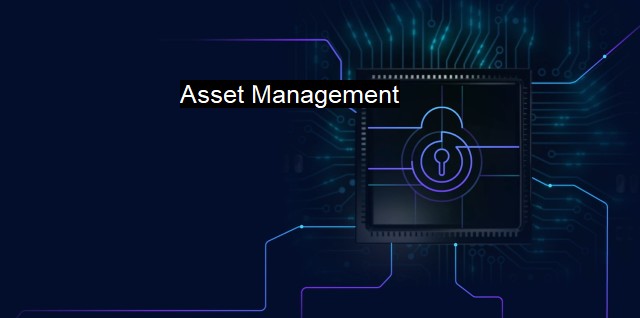What is Asset Management?
The Vital Role of Asset Management in Cybersecurity: Protecting Devices, Applications, and Data from Malware with Effective Antivirus Management
Asset management is a critical component of effective cybersecurity management. It involves the identification, classification, monitoring, and maintenance of an organization's information technology (IT) assets. Asset management enables organizations to understand and control their IT environment, which helps to mitigate risks and improve security posture. Among the assets that need to be managed in the context of cybersecurity are devices, software applications, and data.Antivirus software is one of the essential tools in the fight against malware and other types of cyber threats. Antivirus solutions scan and detect suspicious files and neutralize them before they cause damage to devices and networks. Asset management plays a crucial role in effective antivirus management by helping organizations to identify the devices and software applications that need protection. Through asset management, IT managers can see what devices and software are currently being used and ensure that all of them are protected adequately.
Asset management starts with the identification of IT assets. The process involves reviewing lists of hardware, software, and data that are present in an organization and the functions that each supports. The inventory is then distilled into a comprehensive list that provides a clear picture of all identified IT assets. For antivirus management, this information helps identify all connected devices, the extent of their usage, and what antivirus software is required.
The classification of IT assets involves assigning attributes to assist in the detailed management of each asset. Critically in the cybersecurity context, these classifications consider whether an asset is sensitive or critical and their vulnerabilities. The relevant threats and risks are assessed to ensure that antivirus solutions are installed, consistently monitored, and kept up to date.
Once the IT assets are identified and categorized, organizations need to monitor them continuously. They should ensure that all IT Asset managers have a record of every IT asset, including all mobile assets kept in the inventory. Monitoring all the assets enables managers to detect potential risks far ahead of cyber attackers seeking entry points. These monitoring techniques include discovery tools, supporting controls for changes, authentication, and different network inventory controls used for endpoint inventory.
A well-rounded IT asset management program ensures that every asset in the organization receives maintenance management in a structured manner. Asset maintenance ranges from small routine checks to hour-specific activities that meet specific compliance guidelines. Components that an asset manager would cover during a maintenance check, like detailed reporting, will ideally assist teams carrying out a review into established security controls in an organization. Asset management would be fully preparing granting repeated excellent reporting that efficiently manages workflow while continuously ensuring compliance and security compliance.
IT asset management is essential concerning the cybersecurity aspect of an organization. Organizations that adequately install an IT asset management plan align their asset security controls across all their critical corporate components such as product defense and, infrastructure defenses. Antivirus software represents a critical component of cybersecurity, especially in today's digital age, where businesses rely heavily on technology to function. antivirus software alone cannot guarantee complete protection against cyber threats. A robust IT asset management approach plays a key role in enabling organizations to reduce their risk exposure and enhance their overall security posture against potential assesses from online attackers.

Asset Management FAQs
What is asset management in the context of cybersecurity and antivirus?
Asset management in cybersecurity and antivirus refers to the process of identifying, tracking, and managing all the hardware and software assets in an organization's network. It involves keeping an inventory of all the devices, software applications, and licenses, ensuring that they are up-to-date and properly configured, and that any vulnerabilities or security risks are addressed.What are the benefits of asset management in cybersecurity and antivirus?
Asset management provides several benefits in cybersecurity and antivirus, including reducing the risk of security breaches, ensuring compliance with regulations, optimizing IT resources and costs, improving operational efficiency, and enhancing asset lifecycle management. It helps organizations identify and mitigate security risks before they can be exploited, maintain accurate documentation of their assets, and better align their IT infrastructure with their business goals.What are some common challenges in asset management in cybersecurity and antivirus?
Asset management in cybersecurity and antivirus can be challenging due to the complexity and diversity of IT environments, the constant evolution of technology, and the lack of standardized asset management processes. Other challenges include maintaining accurate and up-to-date asset information, ensuring effective communication and collaboration across departments, managing asset lifecycles, and dealing with budget constraints and resource limitations.What are some best practices for asset management in cybersecurity and antivirus?
Some best practices for asset management in cybersecurity and antivirus include creating and maintaining an accurate inventory of all IT assets, implementing a centralized asset management system, performing regular vulnerability assessments and security audits, enforcing strong access controls and authentication mechanisms, developing and implementing policies and procedures for asset lifecycle management, and providing ongoing training and education for employees. It is also essential to have a regular asset assessment and update plan in place to ensure that assets are properly managed and secured over time. External Resources
| | A | | | B | | | C | | | D | | | E | | | F | | | G | | | H | | | I | | | J | | | K | | | L | | | M | |
| | N | | | O | | | P | | | Q | | | R | | | S | | | T | | | U | | | V | | | W | | | X | | | Y | | | Z | |
| | 1 | | | 2 | | | 3 | | | 4 | | | 7 | | | 8 | | |||||||